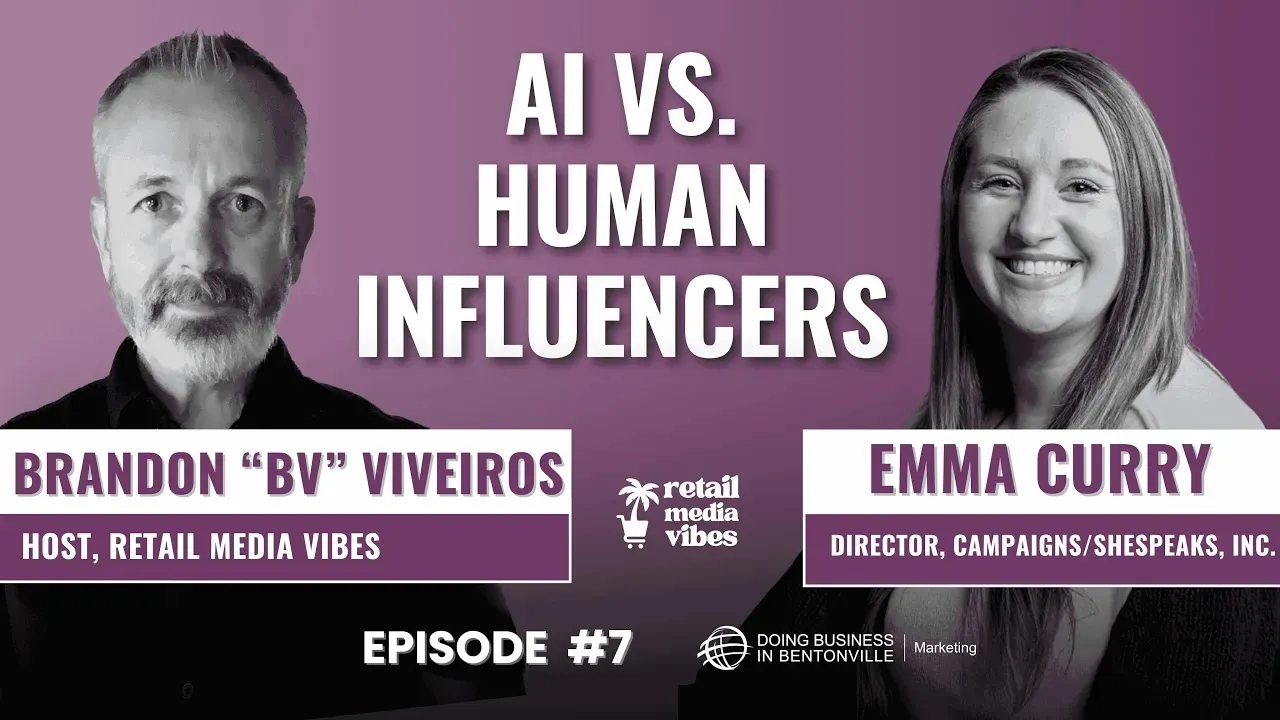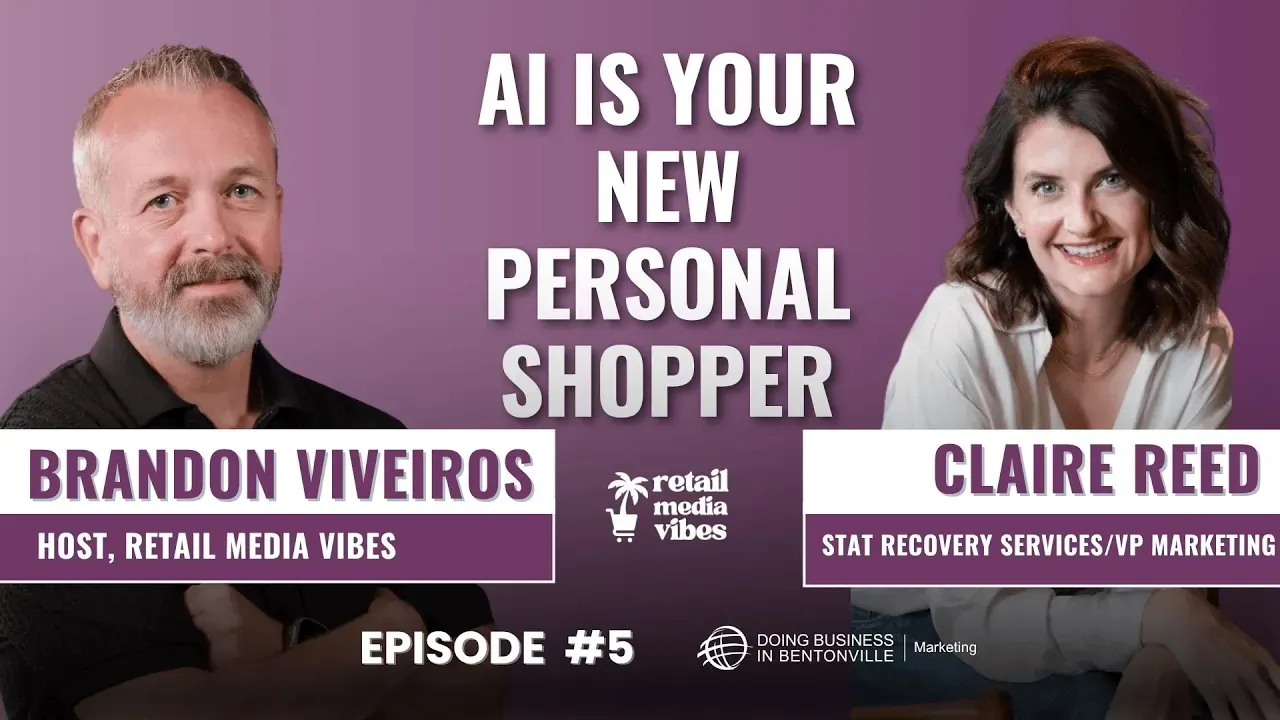Attention has moved where play lives, and that’s exactly where we go today. We sit down with Joel Ponce, CEO and co-founder of Hashku, to break down how gaming, retail media, and commerce now overlap in ways that actually move product. From Roblox and Fortnite worlds to mobile rewarded ads, we map the paths that turn fan energy into measurable outcomes like add-to-cart, store visits, and loyalty that lasts beyond the campaign.
Joel shares how major IP shifted from TV to shelf to immersive spaces, and why “scan to play” on-pack can outperform static signage by creating value at home. We explore digital twins and limited drops that connect physical goods with avatar identity, why Gen Z rates virtual closets so highly, and how cozy gaming and mobile habits expand the audience far beyond stereotypes. If you’ve wondered where to start, we outline a practical crawl–walk–run approach, how to keep brand safety and authenticity intact, and what measurement looks like when multiple publishers speak one language.
Then we tackle AI-driven personalized pricing with clear eyes. Dynamic fares may work for flights, but grocery aisles are built on trust. We weigh the difference between volatility and value, arguing for personalized offers, access, bundles, early drops, over opaque price swings. Finally, we test Instacart’s Caper Cart as a lens on in-store innovation: wayfinding, real-time deals, and checkout speed are wins, but the economics push toward an app-first model that delivers 80 percent of the benefit with better scale and consent.
If you’re building a retail plan for 2025, this conversation will help you choose the right channels, craft native creative for gamers, and measure what matters across platforms. Subscribe, share with your team, and tell us: which bet are you making first, gaming integrations, conversational checkout, or app-powered smart cart experiences?
More About this Episode
Gaming, AI, and the Evolution of Retail Media: How the New Frontier Is Reshaping Shopper Engagement
Gaming and entertainment aren’t just pastimes anymore, they’re commerce channels. The lines between where we play, where we discover, and where we buy are blurring. As retail media evolves into something far more immersive, dynamic, and personalized, brands must rethink how they connect with consumers across fragmented attention spans and platforms. From in-game advertising to AI-powered pricing and smart carts, the future of shopping is taking on a new shape, and it’s moving fast.
Let’s dive into the key forces shaping this transformation and why gaming, artificial intelligence, and new in-store technologies should be part of your strategy today, not tomorrow.
The Gaming-to-Commerce Pipeline: From Play to Purchase
For decades, brands focused on traditional media channels to drive in-store sales. But those days are quickly fading. Gaming is now one of the most time-consuming forms of media across nearly every generation, and for Gen Z and Gen Alpha, it's where culture is being built in real time. According to Parsons School of Design, over 50% of Gen Zers value their virtual closet more than their physical one. That alone should get every brand’s attention.
Joel Ponce, CEO and co-founder of Hashku, knows this better than most. After years at agencies and Paramount working with IPs like Nickelodeon and Teenage Mutant Ninja Turtles, he saw the shift firsthand when kids stopped watching cable and started spending hours inside the Nickverse on Roblox. These weren’t just games. They were brand experiences, immersive, persistent, and deeply personal.
And this was the lightbulb moment that sparked Hashku: a media innovation partner that helps brands show up authentically within gaming platforms and commerce ecosystems. Their mission? Educate and empower marketers to activate intelligently in spaces where people already spend their time and money.
Gaming is Not a Trend, It’s a Channel
Gaming isn’t just for “gamers” anymore. In fact, most people don’t even self-identify with the term, even though they spend hours on mobile games like Candy Crush, Stardew Valley, or Fortnite. The key takeaway is this: Gaming is now a primary form of entertainment, and discovery, for vast swaths of the population.
Here’s what makes it such a compelling advertising channel:
- Massive Attention: Time spent on gaming rivals or even exceeds social media.
- Brand Safety & Control: Platforms like Roblox and Fortnite allow for curated, brand-safe environments.
- Commerce Integration: Immersive commerce features like digital twins or real-world checkouts are becoming more common.
- Playable Ads & Rewarded Video: These formats drive higher engagement and click-through rates compared to standard banner ads.
- Retail Tie-Ins: On-pack activations, QR codes, and loyalty rewards can drive traffic from digital to store.
In fact, one emerging tactic is offering a digital twin of a physical item. A kid buys a branded cereal box with their favorite Roblox experience tied to it, unlocks an exclusive in-game item, and the brand earns both sales and loyalty. These hybrid experiences are not just novel, they’re effective.
How Brands Should Enter the Gaming Space
While many brands want in, most are still unsure how to proceed. According to Ponce, it’s about education first, strategy second. Gaming isn’t a media buy, it’s a cultural context. And entering it without respect for the community, platform, and user behavior is a fast way to get ignored, or worse, backlash.
Here are five ways brands can activate meaningfully:
- Start with Audience Insight: Define who you’re trying to reach, what platforms they use, and why they play.
- Respect the Experience: Don't force traditional ads into immersive worlds. Use custom content, in-game challenges, and contextual messaging.
- Leverage Playable Media: Playable ads and rewarded videos are a smart way to bridge mobile gaming with retail objectives.
- Think Omnichannel: Tie in-game engagement to on-pack promos, loyalty programs, or in-store events.
- Measure Effectively: Use tools that track engagement and conversions across platforms, not just impressions.
This isn’t a spray-and-pray channel. Gaming demands a tailored, thoughtful approach.
AI-Powered Personalized Pricing: Innovation or Instigation?
While gaming presents opportunities to engage, AI-driven personalized pricing introduces a new set of challenges, namely, around trust. The concept seems simple enough: Let artificial intelligence adjust prices based on a customer’s behavior, loyalty status, or inventory levels. But how it’s implemented can make or break a brand’s reputation.
Consumers are already familiar with dynamic pricing in services like Uber and airline tickets. But what happens when the same logic applies to eggs, diapers, or toothpaste? If shoppers believe they’re being charged more based on who they are or when they shop, the backlash could be swift.
As Ponce noted, “At its best, AI pricing provides personalized offers. At its worst, it feels like surveillance.” Brands and retailers must tread carefully.
Here are key considerations:
- Transparency is Crucial: Shoppers need to understand how pricing works and why they’re seeing certain offers.
- Loyalty Integration is Key: Discounts for high-value customers are one thing; discriminatory pricing is another.
- Trust Over Tactics: Long-term brand equity is worth more than short-term margin gains.
- Avoid Over-Gamification: While gamified pricing can be engaging, overuse can erode trust.
Brands like Nike could benefit from AI-powered loyalty pricing, rewarding long-term customers with exclusive access or discounts. But as BV pointed out in the podcast, even he, a Nike member since 2007, doesn’t feel like he gets anything for his loyalty. AI can help change that, if done well.
Smart Carts & In-Store Intelligence: Caper Cart’s Promise
Now let’s bring the conversation back into the physical store. While e-commerce and digital platforms get a lot of innovation, physical retail is seeing a renaissance in its own right, and smart carts are at the center.
Instacart’s Caper Cart, which integrates sensors, weight detection, and a built-in screen, is trying to revolutionize the in-store experience. Shoppers can scan, weigh, and check out directly through the cart. No lines, no friction. But perhaps more interestingly, it opens the door for personalized media and promotions in real time.
Potential use cases include:
- Aisle-Based Offers: Present a coupon when a shopper nears the cereal aisle.
- Dynamic Bundling: Suggest complementary products and apply discounts on the fly.
- In-Store Navigation: Help customers find items more efficiently.
- Retail Media Opportunities: Allow brands to advertise directly within the cart experience.
It’s not just a futuristic gimmick, the data and functionality could translate into real revenue. However, as Ponce noted, shoppers won’t necessarily choose a store just because it has a smart cart. But if the experience is significantly better, faster, easier, more rewarding, that could drive adoption.
Still, scaling the hardware is expensive. The more likely solution? Mobile-first smart cart functionality. Using phones as the hub, perhaps docked on a standard cart, allows retailers to deliver similar benefits with lower investment. Imagine combining this with AI-driven offers and personalized store maps.
The Future of Retail Media is Immersive, Intelligent, and Everywhere
From Roblox to retail aisles, one thing is clear: the moment of truth can now happen anywhere. As BV put it during the show, “We’re in an era where everywhere is a moment of truth.”
Here’s what that means for marketers:
- Entertainment is Commerce: Kids aren’t watching TV, they’re playing in virtual worlds. Meet them there.
- AI is Your Co-Pilot: But only if you use it to empower, not manipulate.
- Retail is a Data Layer: Whether online or in-store, every interaction is a chance to personalize, learn, and improve.
- Trust is the New Currency: Be transparent. Be authentic. Or be ignored.
The winners in the next era of retail media will be those who understand how to bridge culture, commerce, and technology, without losing the human connection.










